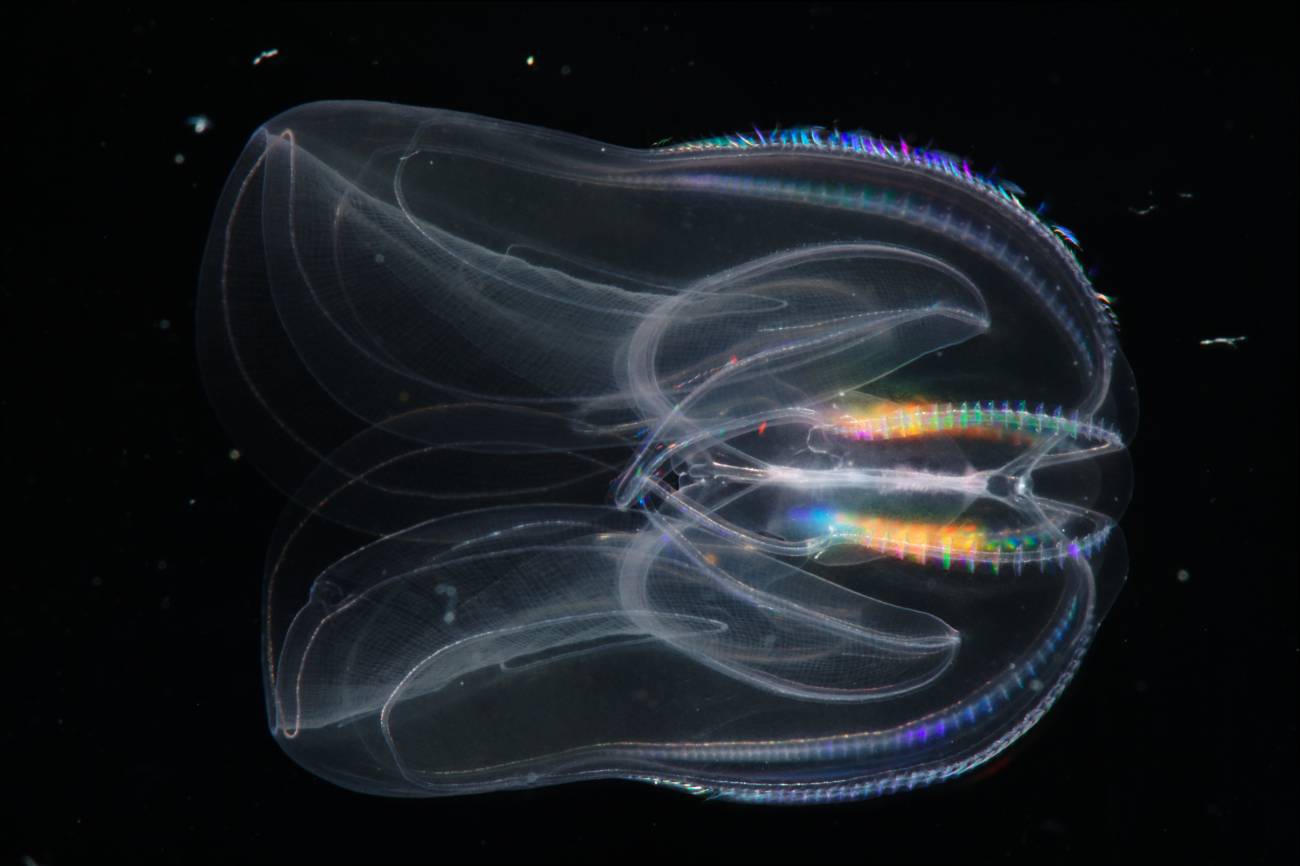Unlike jellyfish, ctenophores They have an egg-shaped shape and do not itch, because they do not have stinging cells. More than a hundred species of these creatures with comb-shaped bands of cilia have been described, including the American ctenophore (Mnemiopsis leidyi) figure below the 100 invasive alien species according to the most harmful in the world International Union for the Conservation of Nature.
New research published in the journal Current biology describes that these sea creatures have the ability to fuse, so that two individuals easily become one after an injury. They then quickly synchronize their muscle contractions and merge their digestive tracts to share food.
“What makes our discovery remarkable is that the fusion process is completed in just about two hours, with a 90% success rate. Furthermore, once fused, the muscle contractions are synchronized, and even the tracts digestive organs fuse togetherwhich is quite surprising,” he argues. In Jokura, researcher at the University of Exeter, United Kingdom, and the National Institutes of Natural Sciences in OkazakiJapan.
They came to this conclusion by keeping a population of these animals in a seawater tank in the laboratory. In this way, they realized that an unusually large individual appeared to have two hind legs and two sensory structures – known as apical organs – instead of one. As they observed him, they wondered if this unusual individual emerged from nature fusion of two injured ctenophores.
To find out, they removed partial lobes from other individuals and placed them together in pairs. It turned out that 9 times out of 10 they merged and survived for at least 3 weeks.
“Both lobes are removed when they fuse. We believe that the fusion occurs when the regenerative programs of both individuals are activated,” says the scientist.
In order for fusion to occur, the injured areas must remain closed for a while.
A later investigation revealed this afterwards just one nightthe two original individuals smoothly became one, with no clear separation between them. When the researchers punctured one lobe, the entire fused body responded, indicating that their nervous systems were also fully united.
“We were surprised to see that mechanical stimulation was applied to one side of the skin ctenophore merged resulted in a synchronized muscle contraction on the other side,” says Jokura.
More detailed observations showed that the fused animals made spontaneous movements during the first hour. After this, the timing of the contractions in each lobe began to become more synchronized. In two hours95% of the fused animal’s muscle contractions were completely synchronous.
“For nuclear fusion to take place, the affected areas must remain close for quite some time. This case would be rare in natural environments,” says Jokura.
They also looked closely at the digestive tract and found that it had also melted
When one mouth swallowed fluorescently labeled brine shrimp, the food particles made their way through the molten channel.
Scientists are not clear how this survival strategy works. They believe that future studies will help fill these knowledge gaps, with potential implications for regenerative research.
“There are still many unknowns about the evolution of these mechanisms. We still don’t know which genes or molecules are involved in these processes,” the scientist concludes.
Reference:
Jokura et al., “Fast physiological integration of fused ctenophores”. Current biology

